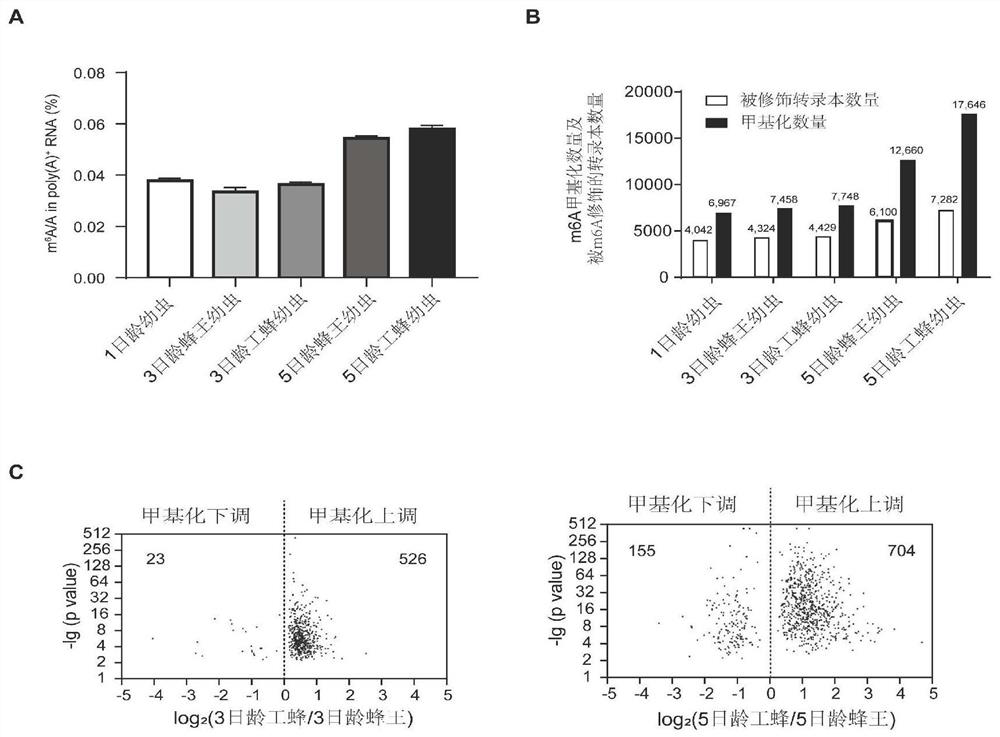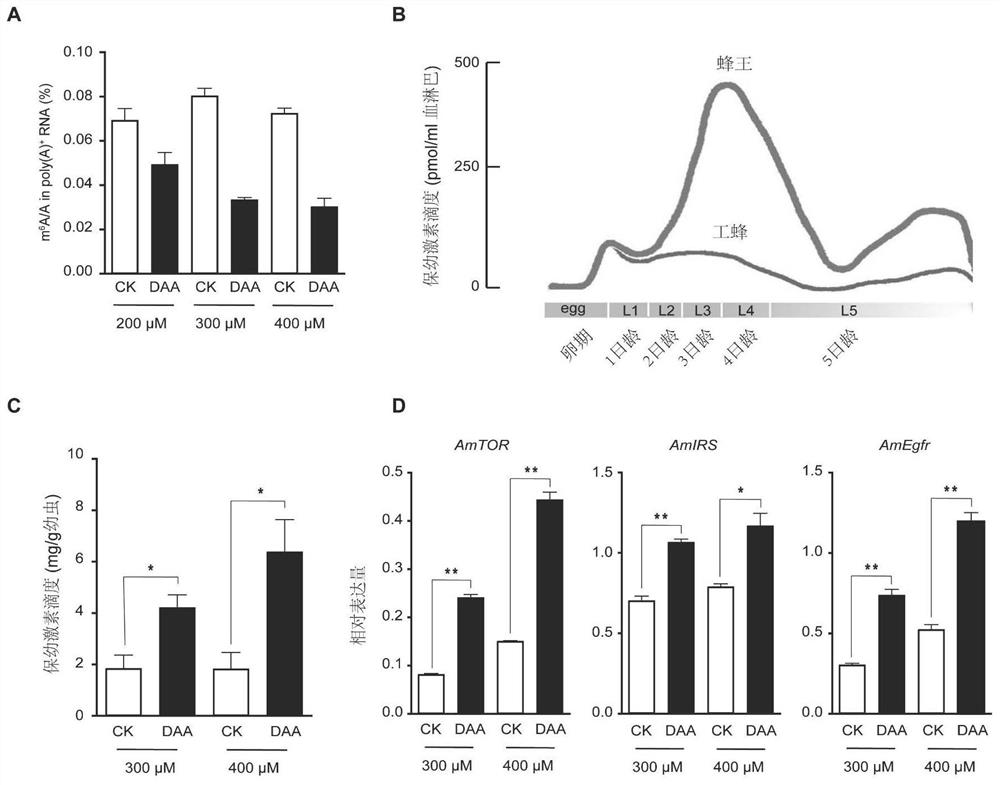Feed additive for improving breeding quantity of queen bees and feed containing feed additive
A feed additive and feed technology, applied in the field of feed additives, can solve the problems of limited acceptance of artificial queen bees, cumbersome operation, and not too many queen bees
- Summary
- Abstract
- Description
- Claims
- Application Information
AI Technical Summary
Problems solved by technology
Method used
Image
Examples
Embodiment 1
[0024] In 1974, a methyl group on adenine was first discovered in mRNA. This modified base is called N6-methyladenosine (N6-methyladenosine), abbreviated as m 6 a. The inventor has carried out following experiment:
[0025] 1. m in worker bee larvae 6 A methylation content was significantly higher than that of queen bee larvae
[0026] The honeybees used were Italian honeybees (Apis mellifera), which were purchased from apiaries and raised by beekeepers.
[0027] Five larval samples were collected at three larval developmental stages of queen and worker bees: 1-day-old larvae, 3-day-old queen and worker larvae, and 5-day-old queen and worker bee larvae. The mRNA was isolated from these five samples, and the m 6 A level of methylation. see results figure 1 Figure A shows that no matter the age of 3 days or 5 days, the m 6 The A level was higher than that of queen bee larvae at the same age.
[0028] by m 6 A-seq technology, using m 6 Antibody A (company Synaptic Syste...
PUM
 Login to View More
Login to View More Abstract
Description
Claims
Application Information
 Login to View More
Login to View More - R&D
- Intellectual Property
- Life Sciences
- Materials
- Tech Scout
- Unparalleled Data Quality
- Higher Quality Content
- 60% Fewer Hallucinations
Browse by: Latest US Patents, China's latest patents, Technical Efficacy Thesaurus, Application Domain, Technology Topic, Popular Technical Reports.
© 2025 PatSnap. All rights reserved.Legal|Privacy policy|Modern Slavery Act Transparency Statement|Sitemap|About US| Contact US: help@patsnap.com


